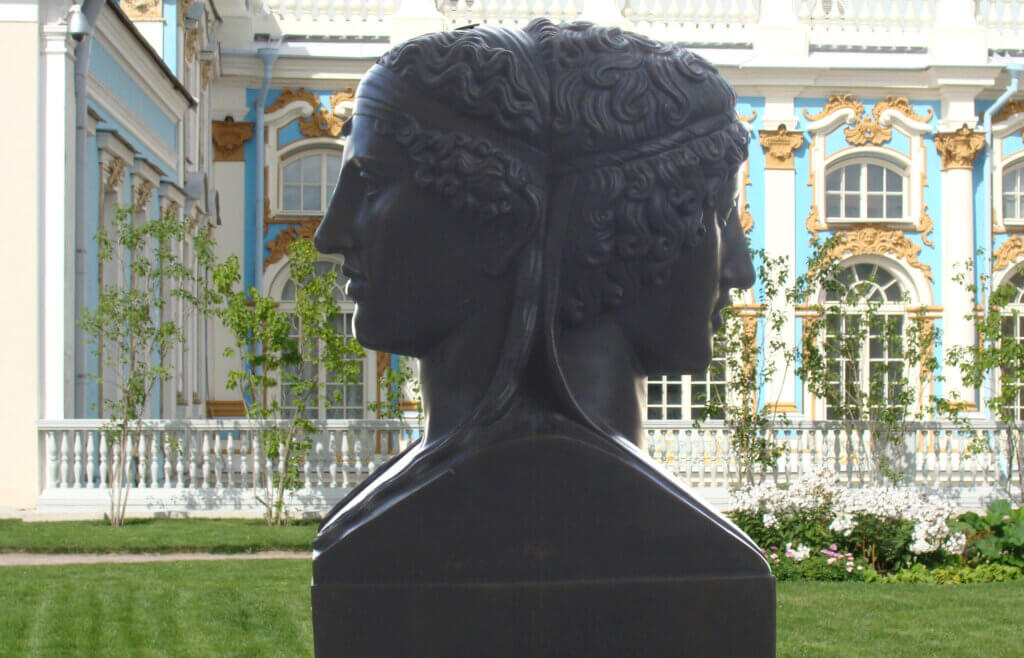Use spectives to unlock the full potential of conferences
During a 1992 conference, I created the first of what I now call spectives. A spective is a plenary closing session that combines a retrospective (looking back at what just happened) with a prospective (looking forward into the future).
My visual metaphor for a spective is the two-faced Roman god Janus, who was “the god of beginnings, gates, transitions, time, duality, doorways, passages, frames, and endings”. [Fun fact: The month of January is named for Janus.]
I won’t repeat the details of leading a spective here because they are covered comprehensively in all my books. (You can also learn a fair amount about spectives by searching the posts on this site.)
You’d think spectives would take more time the larger the group, but they scale surprisingly well. Most spectives don’t include facilitated discussion of uncovered themes and issues and typically take from fifteen to forty-five minutes. [TIP: I usually schedule an hour. This means the event usually ends early, which participants appreciate 😀.]
They are a perfect way to end a conference because:
Spectives rapidly and effectively provide a collective experience of what the conference has been like for everyone
I’ve found that spectives are a fantastic tool for participants to get a big picture of what an event has been like for the group. This informs their own experience. A participant may learn that others shared their specific experience (e.g., I liked/didn’t like a session/format/topic, etc.) Or they may discover that aspects that were negative for them were positive for others, or vice versa. Learning how your experience reflects that of the group is valuable information that leads to the consequence that…
Spectives build community
I’m not sure there’s a faster way for a group’s members to learn about what they have in common. Rapidly uncovering and expressing thoughts and feelings about what they’ve experienced together creates powerful bonds. The intense experience makes it likely (though not assured) that the event participants will want to meet again. And the spective provides valuable clues as to what forms such meetings might take.
Spectives are simple to lead, fun, informative, and bonding. They end your event on a high note. So make them the closing session of every conference you create!
A hat tip!
A hat tip to Nicole Osibodu and Kamryn Bryce for sparking me to write about the value of spectives, via their LinkedIn post (below) on how they use them at The Community Factory events!

 Give attendees experiences, not things.
Give attendees experiences, not things.